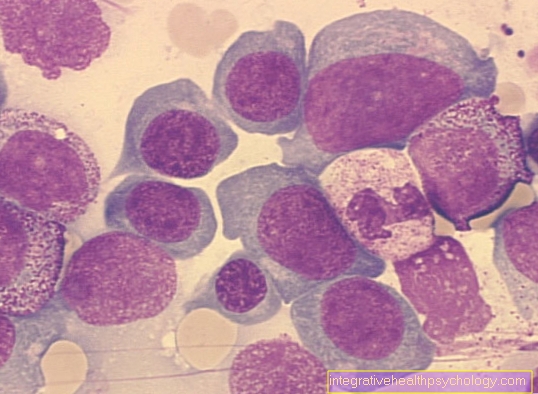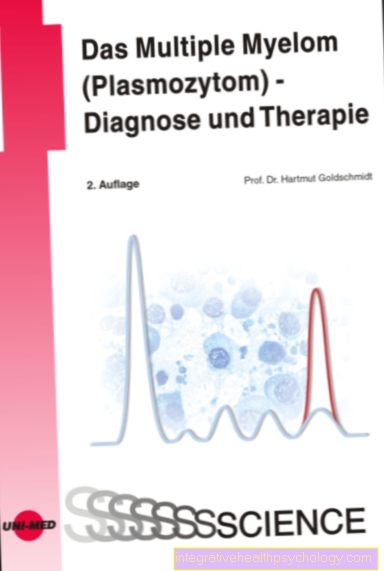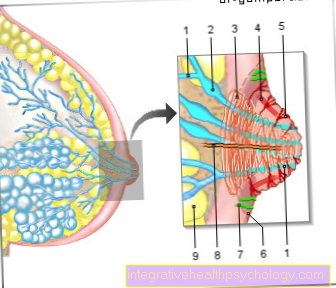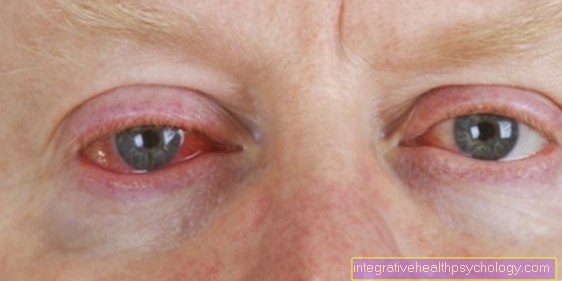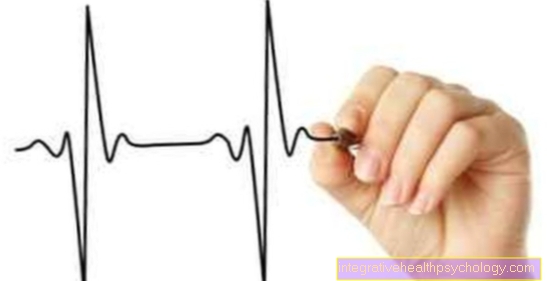Ultrasound in physical therapy
introduction
The use of ultrasound in medicine has been tried and tested for a long time. It is primarily used as a diagnostic method, for example, to assess internal organs or to monitor the growth of the embryo in pregnant women. In addition to this diagnostic use, there is also the use of ultrasound in the field of physical therapy or in the offerings of many physiotherapists. Usually this is an IGEL service and the treatment must therefore be paid for yourself

In general, ultrasound is sound waves that are above the hearing range of the human ear. Frequencies in the range of several megahertz are used. The waves emanating from the transducer stimulate the body's tissue to vibrate. Every tissue in the body reacts to this in a certain way. This type of vibration response can then be registered with a detector in the ultrasound imaging equipment. Or you can use this response of the tissue as a therapy method. There are different transducers and sound patterns that are used depending on the clinical picture.
Possible uses for ultrasonic devices
Ultrasound therapy is mainly used for diseases of the musculoskeletal system. For example, it can be used to treat muscle pain, joint problems or pain syndromes. But the promotion of the healing of bone fractures and the loosening of scar tissue or other tissue adhesions belong to the area of application. In addition, the ultrasound can also be used in conjunction with creams or gels in order to promote the absorption of their ingredients through the skin. The healing of chronic wounds, for example in diabetics or an existing PAOD, should be accelerated by ultrasound. Ultrasound therapy is also used for many orthopedic symptoms, such as osteoarthritis or spinal diseases.
For more information, see: Osteoarthritis therapy
Another important area of application is the therapy of many skin diseases. These include, for example, neurodermatitis, psoriasis, but also acne or the treatment of cosmetic problems, such as Bags or wrinkles.
For more information, see: Wrinkle treatment with ultrasonic waves
Use on the knee
A typical area of application for ultrasound therapy is knee osteoarthritis. On the one hand, the warming and circulation-promoting ultrasound therapy can help to alleviate the pain that is often present. This often also works because the muscles in the knee area relax due to the warmth and so reduce their impact on the knee itself. On the other hand, the better supply also affects the existing cartilage and can delay its wear and tear. The use of active ingredients, such as Voltaren or other sports ointments, works very well on the knee. Since the knee is very accessible, the ultrasound can penetrate here and also reach deeper joint areas.
You can find more information at: Therapy of knee osteoarthritis
Treatment side effects
Overall, ultrasound is considered a method with very few side effects. After many years of experience in the diagnostic field, no side effects were found. When used in the context of physical therapy, however, side effects can occur due to the actually desired effects. Increased blood flow and heat generation can have dangerous consequences. For this reason, ultrasound therapy should not be used in the presence of infections, feverish infections, inflammations or disorders of blood clotting. Otherwise the therapy could spread the infection or inflammation. If the coagulation is impaired, there is a risk that blood thrombi may form or loosen during the therapy, which may lead to a heart attack or stroke.
If a tumor is present, one should also be careful. After all, in this case the effects of ultrasound could on the one hand increase the inflammatory process and on the other hand also contribute to metastasis. Ultrasound therapy should also be avoided if there are diseases of the arteries or veins. Since the warming effect of the ultrasound is particularly strong at the bone borders, it can also happen that slight burns occur due to the development of heat on the periosteum, which can be very painful. In principle, the ultrasonic waves can also destroy cells and cause minor bleeding into the surrounding tissue.
Therefore, ultrasound therapy should only be used when it is really needed!
Ultrasound treatment costs
The treatment with the ultrasound device is not a service of the statutory health insurance companies. The private health insurance companies usually cover the costs. The prices set vary greatly from provider to provider. A distinction is often made between different methods, which are then also reflected in the price. In some practices it is possible to carry out the therapy yourself, which makes it a little cheaper. Depending on the area of application, in addition to the actual ultrasound treatment, costs for care products and active ingredients used must also be included. The price for the treatment itself is usually around 15 € per 15-20 minutes of therapy. Usually 10-12 sessions are planned, usually several times a week. In the case of protracted complaints, it can also make sense to borrow an ultrasound device for the treatment and to be able to carry out the therapy yourself on a daily basis. The costs are around 15 € a day.
How does the therapy work?
Ultrasound has various physical effects when it comes into contact with the body. On the one hand, it causes the tissue itself to vibrate in the tissue. This has an effect similar to that of massage therapy. This means that the blood circulation is increased, the cell metabolism is stimulated and the muscles are better supplied with blood. On the one hand, this enables toxins to be removed more effectively. On the other hand, more oxygen reaches the cells with the blood, which improves the supply.
When used on damaged nerves, or in the case of neuropathic pain, the nerve should be stimulated to regenerate. Another effect of ultrasound is that it generates heat. The resulting heat in the tissue also leads to a further increase in blood flow and relaxation in the tissue. In this respect, ultrasound has similar effects here as well as heat and massage therapy. Similar to these, the influence of the sound waves on the tissue has a relaxing effect and can often help improve chronic pain.
In addition, the ultrasound should also stimulate the formation of collagen, an important component of connective tissue. Effects on lymph drainage and the pH value of the skin are also described. If the ultrasound is used in conjunction with active substances, e.g. Is used in the form of creams or ointments, it promotes the absorption of the substances into the skin and their transport into the deeper tissue layers.
Read more at: Ultrasound / sonography





